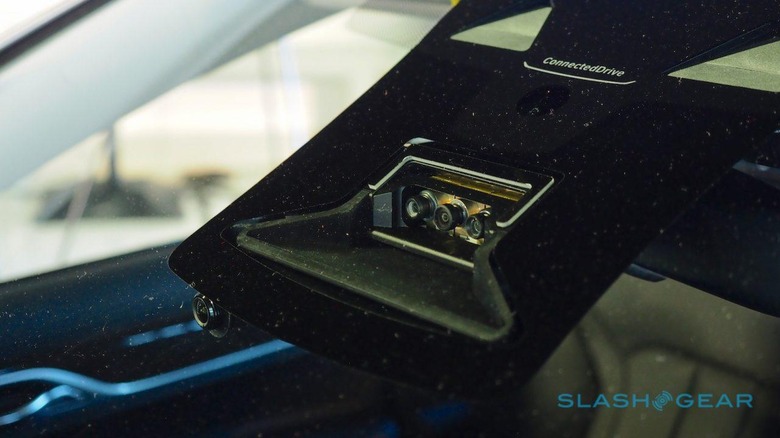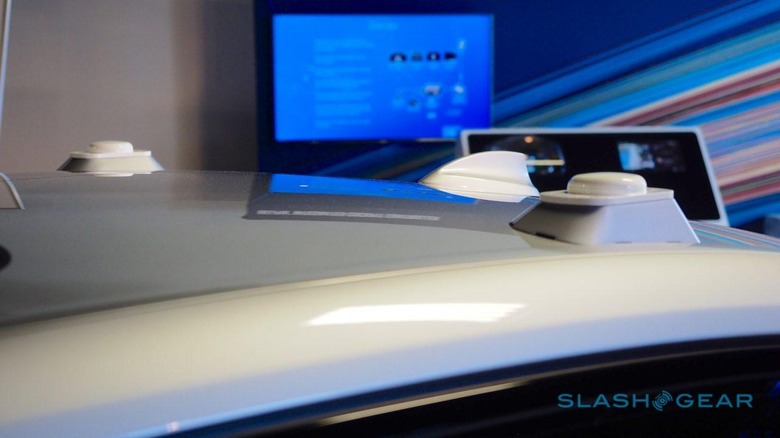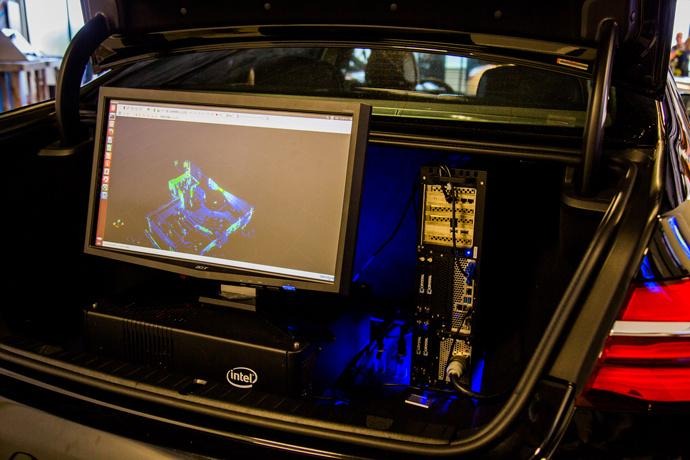Inside Intel's Big Plan To Seize The Wheel In Self-Driving Cars
Autonomous driving is coming, and unsurprisingly Intel believes it should be at the heart of it. At the former Altera facility in San Jose, California, the company better known for powering your laptop and PC outlined its vision for driverless cars over the coming years. While collaboration is the name of Intel's game, make no mistake: it sees this as a prime opportunity to sell more silicon.
"We think this is a place where we can be close to potential partners, potential startups," Kathy Winter, VP of Intel's Automated Driving Group, said of the center, which will act as a "garage" for the company's self-driving work moving forward. According to Winter, the positioning is essential because of how it facilitates different teams within the firm working together. "At Intel, this is probably been the best examples I've seen of "One Intel"," she said.
However, there'll be more than just Intel staff on-site. "The only way we're going to solve this problem across the industry," Winter said of autonomous technology taking old, is not by ourselves but by working together." That means a long list of partners, from automakers, through wireless experts, software developers, and experts in the high-definition mapping self-driving vehicles will demand.
One such example is BMW, which will be providing the donor cars for a new Intel-powered fleet of autonomous testers. Though at first glance they look like your typical 7 Series, look closer and you can see a Mobileye camera array behind the windshield, and a pair of high-resolution GPS sensors on the roof near the satellite radio antenna. Around forty of the cars will be on the road by the end of the year.

The goal isn't just to make a system for BMW to deploy its own production self-driving vehicles. Instead, the automaker, Intel, and Mobileye will collaborate on a scalable architecture that other car companies can build upon, ranging from select modules – like sensor hubs that pull together camera, radar, and LIDAR data – to an entire turn-key system.
Exactly how that will roll out is unclear at this stage: as BMW's Kenn Sparks told us, "we have to build it first!" The automaker is counting on the various autonomous platforms in development coalescing into a single, open standard. What BMW is backing may not be the only one to contribute to that, "but we want it to be the best," Sparks said. BMW has earmarked 2021 as the target for a commercial roll-out.
Whatever the underlying platform, individual cars themselves will have some degree of onboard intelligence, but it's when technologies like V2V (vehicle to vehicle), V2I (vehicle to infrastructure), and V2P (vehicle to pedestrian) are factored in that autonomous driving will be able to reach a tipping point. That will allow for cars that can report back traffic conditions to their counterparts not yet with line-of-sight to a crash, or for cities to redirect self-driving vehicles around congestion or road works. That, of course, relies on a persistent wireless connection.
"We think of the network like oxygen," Lynn Comp, senior director of industry enabling for the Network Platforms Group, "people use it, but they don't necessarily realize they need it." Comp's team is working with infrastructure providers like Ericsson to ready the wireless world for the demands of self-driving vehicles and the distributed computing that Intel is betting will be the brains of that.

5G will be key to that, though Intel isn't holding off until next-gen networks are deployed. While the current LTE deployment may not support the minimal latency autonomous cars would require to rely on the overarching cloud for their intelligence, the Network Platforms Group is looking to mobile edge computing (MEC) stations to fill in the gaps. Effectively a hub of cloud compute that's positioned just one hop away from cellular base stations, it minimizes latency through sheer proximity to the data users: potentially down to around 20ms over an LTE connection, Comp told me.
Such architecture clearly has benefits for Intel, in that it means more servers and thus more chips. However, it's no temporary stopgap until 5G proliferates. Even with the next-generation networks in operation, a distributed mobile edge computing system would be able to survive interrupted network connections or downtime by routing the workload adaptively.
The danger is one of network overload. Just as the highways can get weighed down with physical traffic, so the wireless network could easily slow to a crawl when each car is gathering terabytes of data every day. Intel's strategy there is "Intelligence Everywhere", in effect smarter filtering at each stage of the process, from car to MEC to the broader reaching cloud.
So, while the car itself might only need the data it's collecting to monitor for potential engine faults, it'll also be clever enough to decide what of that data might be more useful higher up the chain. That could be fed back to the mobile edge computing installation, which could collate and rake through data related to its immediate location. The traffic data communicated from a group of proximate vehicles, for instance, might be sufficient for adaptive routing to navigate autonomous vehicles around congestion hotspots.

Meanwhile, each MEC point would also have the filtering intelligence to feed data back into the cloud overall. That could then be used to figure out things like where new city infrastructure could be best positioned, or identify accident hotspots for greater attention from emergency services. At the same time, the inherent intelligence to filter out the extraneous information could help prevent the network as a whole from being overloaded.
NOW READ: This is Apple's self-driving SUV
Intel clearly isn't the only company working on autonomous technologies, and neither is it the only silicon business hoping to get its chips into pole position. Still, there are few rivals which have, not only the same scale, but the various strands of processor, storage, network infrastructure, computational vision and sensing, and other components that will together enable vehicles that can pilot themselves.
